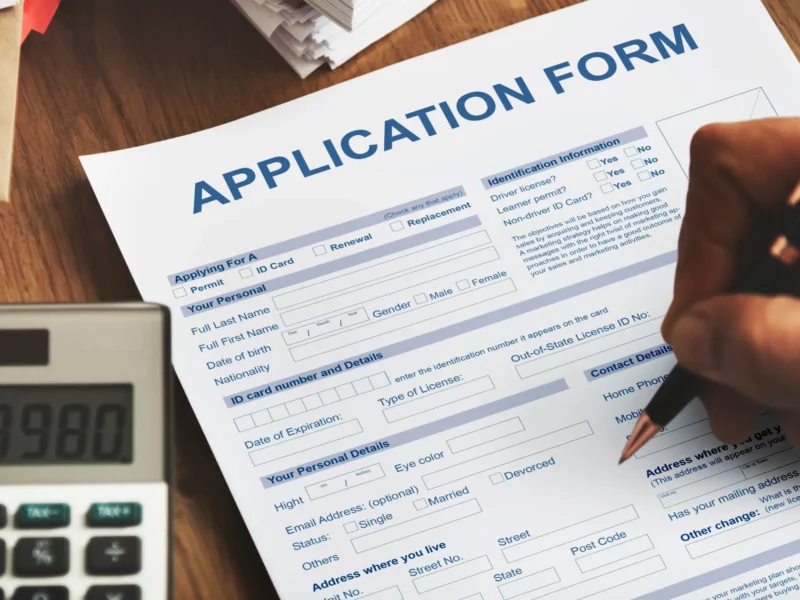Student loans play a vital role in the college journey for countless students in the United States. They serve as a financial resource that enables students to cover essential expenses like tuition fees, textbooks, and other costs associated with higher education. Without the availability of student loans, many students would face significant challenges in affording college, potentially missing out on the transformative opportunities that come with pursuing higher education.
One of the key advantages of student loans is that they alleviate the financial burden, allowing students to focus on their studies instead of worrying about how to fund their college education. By providing necessary financial support, student loans enable students to attend college full-time and successfully complete their degree programs within a reasonable timeframe.
Moreover, student loans offer additional benefits beyond funding college expenses. They can assist students in establishing credit and cultivating a positive credit history, which holds particular significance for those who have limited or no credit history established.
In summary, student loans serve as an indispensable tool for students to realize their educational aspirations and lay the foundation for a brighter future. It is important to acknowledge that while student loans come with inherent risks and challenges, such as high-interest rates and the potential for accruing debt, they remain an integral part of the college experience for many students in the United States.
This blog post will take a look at the following:
- Types of student loans
- Eligibility requirements:
- How to apply for federal student loans
- How to apply for private student loans
- Tips for getting approved
- Repayment options.
Let’s dive fully in:
Types of Student Loans
There are two primary categories of student loans available in the United States: federal loans and private loans. It’s crucial to familiarize yourself with the distinctions between these types of loans before making a decision, as each has its own advantages and disadvantages.
1. Federal student loans are loans provided by the federal government. They are accessible to students who meet specific eligibility criteria, such as being enrolled in an eligible degree program and maintaining satisfactory academic progress. Several types of federal student loans are available, including Direct Subsidized Loans, Direct Unsubsidized Loans, and Direct PLUS Loans.
2. Direct Subsidized Loans are intended for undergraduate students who demonstrate financial need. The federal government covers the interest on these loans while the student is in school and during certain other periods, such as deferment or forbearance.
Direct Unsubsidized Loans are available to both undergraduate and graduate students regardless of financial need. Unlike Direct Subsidized Loans, interest starts accruing on these loans as soon as they are disbursed.
3. Direct PLUS Loans are designed for graduate students and parents of dependent undergraduate students. These loans require a credit check and may have higher interest rates compared to other federal student loans.
4. On the other hand, private student loans are offered by private lenders like banks or credit unions. These loans have specific eligibility requirements, such as having a good credit score or having a co-signer with good credit. Private student loans may carry higher interest rates than federal student loans and may not offer the same repayment options or loan forgiveness programs.
Both federal and private student loans can be valuable resources for financing your college education. However, it’s essential to thoroughly evaluate your options and select the loan type that aligns best with your needs and financial situation.
Remember, taking the time to make an informed decision can have a significant impact on your financial well-being throughout and after your college years.
Eligibility Requirements For Student Loans in the US:
To qualify for student loans in the United States, there are specific criteria you need to meet. These requirements can differ depending on the type of loan you’re seeking. Here are some of the common eligibility factors:
- Enrollment in an eligible degree program: Federal student loans require enrollment in an accredited degree program. Private lenders may have their specific program eligibility criteria.
- Citizenship or legal residency: For federal student loans, you must be a U.S. citizen or an eligible non-citizen. Private lenders may have their requirements related to citizenship or residency.
- Credit score: Many private lenders consider your credit score as an important factor in loan approval. Federal student loans typically do not require a credit check.
- Income: Certain private lenders may have minimum income requirements for loan eligibility. Federal student loans do not impose income criteria.
- Co-signer: If your credit or income doesn’t meet the requirements set by private lenders, you may need a co-signer with good credit and sufficient income to qualify for the loan.
It’s important to note that eligibility requirements can vary depending on the loan type and the lender you are working with. It’s crucial to carefully review the specific eligibility criteria associated with the loan you intend to apply for to ensure that you fulfil all requirements.
By understanding and meeting the eligibility requirements, you can increase your chances of qualifying for student loans and receiving the necessary financial support to pursue your educational goals.
How to apply for federal student loans
Applying for federal student loans is a crucial part of financing your college education, although it can be a bit overwhelming. To help you navigate the process, here’s a step-by-step guide on how to apply for federal student loans:
Step 1: Fill out the FAFSA: Begin by completing the Free Application for Federal Student Aid (FAFSA). This form gathers information about your financial situation, allowing the government to assess your eligibility for federal student aid.
Step 2: Review your Student Aid Report (SAR): Once you’ve submitted the FAFSA, you’ll receive a Student Aid Report (SAR) summarizing the details you provided. Take the time to carefully review this report and ensure that all the information is accurate.
Step 3: Determine your eligibility: With the SAR in hand, you can now assess your eligibility for federal student loans. Factors like your financial need, enrollment status, and academic progress will influence your eligibility.
Step 4: Select a loan servicer: If you qualify for federal student loans, you’ll need to choose a loan servicer to handle your loans. This service will be responsible for disbursing your loan funds and managing repayments.
Step 5: Complete entrance counselling: Before receiving your federal student loan funds, you’ll need to participate in entrance counselling. This counselling session provides important information regarding your rights and responsibilities as a borrower.
Step 6: Sign a Master Promissory Note (MPN): After completing entrance counselling, you’ll be required to sign a Master Promissory Note (MPN). This document outlines the terms and conditions of your loan and serves as a binding agreement between you and the lender.
Overall, the process of applying for federal student loans may take some time and effort, but it’s an essential step in securing the financial assistance needed to pursue your college education. By following these steps and maintaining close communication with your loan servicer, you can ensure that you receive the necessary funding to fulfil your educational aspirations.
Step by Step Guide on How to Apply for Private Student Loans in the US
When it comes to applying for private student loans, it’s crucial to navigate the process effectively to secure the necessary funding for your college education. Here’s a step-by-step guide on how to apply for private student loans:
Step 1: Research lenders: Start by conducting thorough research on various lenders. Look for those that offer competitive interest rates, reasonable fees, and flexible repayment options. Take your time to explore and identify potential lenders that meet your requirements.
Step 2: Compare rates and fees: Once you have a list of potential lenders, compare their interest rates and fees. Pay attention to finding lenders with the lowest rates and fees, as this will save you money throughout the life of your loan.
Step 3: Check eligibility requirements: Before applying for a private student loan, carefully review the lender’s eligibility requirements. Some lenders may have specific criteria such as a minimum credit score or income level for borrowers to qualify.
Step 4: Gather required documents: If you meet the eligibility requirements of a particular lender, gather all the necessary documents they require. This typically includes proof of income, tax returns, and other relevant financial documents. Make sure to provide accurate and complete information.
Step 5: Submit your application: Once you have all the required documents, submit your application to the lender. Double-check that all the information you provide is accurate and complete. This will help avoid any unnecessary delays or potential denials.
Step 6: Review your loan offer: If your application is approved, carefully review the loan offer provided by the lender. Take a close look at the interest rate, fees, and repayment terms to ensure they align with your needs and financial situation.
Step 7: Sign your loan agreement: If you are satisfied with the loan offer, proceed to sign the loan agreement. This agreement outlines the terms and conditions of your loan and serves as a legally binding commitment between you and the lender.
Overall, applying for private student loans can be a time-consuming process, but it’s a vital step in securing the necessary funds to support your college education. By following these steps and maintaining open communication with your chosen lender, you can increase your chances of receiving the financial assistance required to fulfil your educational goals.
Tip for Getting Your Student Loans Approved in the US
Securing approval for a student loan can pose a challenge, especially if you have limited credit history or income. Here are some practical tips and advice to enhance your chances of getting approved for a student loan:
Improve your credit score: Lenders heavily consider your credit score when assessing your loan application. Take proactive measures to boost your credit score, such as paying down debts, making timely payments, and refraining from new credit applications.
1. Seek a co-signer: If you lack a solid credit history or sufficient income, consider finding a co-signer with a commendable credit score and income. A co-signer can bolster your loan eligibility and potentially secure a lower interest rate.
2. Explore multiple options: Avoid rushing into the first loan you encounter. Instead, explore various lenders and compare their rates and fees. This allows you to identify the loan that best aligns with your financial circumstances and requirements.
3. Prioritize federal loans: Federal student loans generally offer lower interest rates and more flexible repayment options compared to private loans. It’s advisable to apply for federal loans before considering private loans.
4. Apply with a co-signer: Applying for a private student loan with a co-signer can heighten your chances of approval. A co-signer agrees to assume responsibility for the loan if you’re unable to make payments.
5. Choose the right lender: Select a lender that specializes in student loans and has experience assisting borrowers in situations similar to yours. Look for lenders offering competitive rates, reasonable fees, and adaptable repayment options.
Overall, securing approval for a student loan necessitates careful planning and preparation. By following these practical tips and maintaining close communication with your lender, you can increase your likelihood of obtaining the necessary funding to accomplish your educational aspirations.
Repayment Options for Student Loans
Once you complete your studies or leave school, it’s time to start repaying your student loans. Thankfully, there are various repayment options at your disposal to effectively manage your debt. Here are some commonly used repayment options for student loans:
1. Standard repayment plan: The standard repayment plan is the default choice for most federal student loans. It involves making fixed monthly payments over 10 years.
2. Graduated repayment plan: With the graduated repayment plan, your initial monthly payments are lower and gradually increase over time. This option suits individuals who anticipate a future increase in their income.
3. Extended repayment plan: The extended repayment plan allows you to extend your repayment period for up to 25 years. While this reduces your monthly payments, it also leads to a higher total interest payment over the loan’s lifespan.
4. Income-driven repayment plans: Income-driven repayment plans are specifically designed for borrowers with low income, enabling them to manage their student loan debt. These plans calculate your monthly payment based on your income and family size. If you are facing difficulties in making payments, this option can be beneficial.
5. Loan forgiveness programs: Loan forgiveness programs offer partial or complete forgiveness of your student loan debt if you meet specific criteria. For instance, the Public Service Loan Forgiveness program forgives the remaining balance on your Direct Loans after you have made 120 qualifying payments while working full-time for an eligible employer.
In conclusion, there are diverse repayment options for student loans. By familiarizing yourself with these alternatives and maintaining open communication with your loan servicer, you can identify the repayment plan that suits your needs and financial circumstances.






